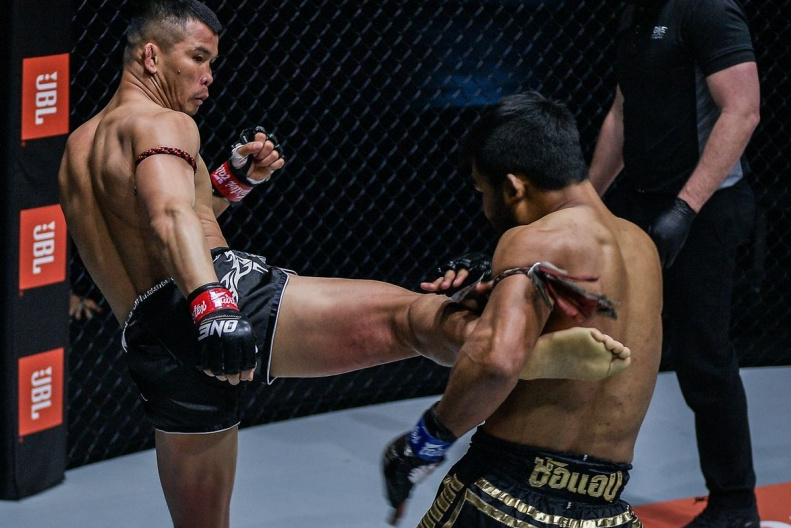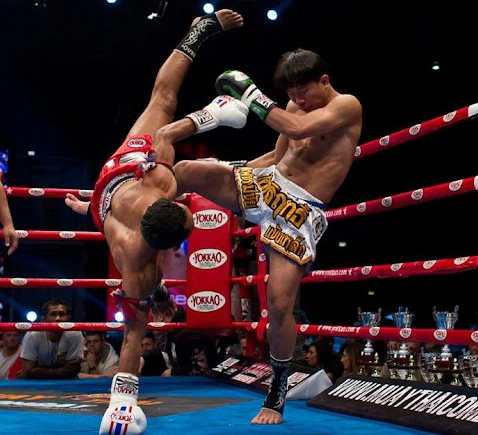Muay Thai Knowledge
Mastering the Art of Muay Thai Kickboxing: Advanced Techniques
Understanding Muay Thai Kickboxing
History and Philosophy
Muay Thai has roots in Thailand, developing as a combat art for warriors. It embodies respect, honor, and perseverance, with a focus on using fists, elbows, knees, and shins.
Importance of Advanced Techniques
Why Advance?
Advancing in Muay Thai enhances skill, competitiveness, and physical conditioning. It allows fighters to refine techniques and compete at higher levels.
Advanced Striking Techniques
Elbows and Knees
Master powerful elbow strikes like horizontal, diagonal, and spinning elbows. Advanced knee strikes include jumping and flying knees.
High Kicks and Spinning Attacks
High kicks target the head and neck, while spinning attacks add surprise elements to your repertoire.
Mastering Clinch Work
Clinch Fundamentals
The clinch involves close-range control and strikes. Master maintaining a strong grip and positioning.
Advanced Clinch Moves and Defense
Learn sweeps, throws, and transitioning between strikes and grappling. Effective defense involves breaking the grip and using footwork to escape.
Footwork and Movement
Advanced Footwork and Angles
Footwork is crucial for offense and defense. Practice lateral movements, pivoting, and using angles to create openings.
Defensive Movement
Improve slipping, bobbing, weaving, and back-stepping to evade strikes.
Combination Attacks
Creating Combos and Timing
Blend punches, kicks, elbows, and knees. Effective combinations rely on timing and balancing power with speed.
Defense and Counterattacks
Blocking, Dodging, and Parrying
Master blocking, dodging, and parrying to redirect strikes and create counterattack opportunities.
Training Regimens for Advanced Fighters
Strength Training and Cardio
Incorporate weightlifting, resistance training, and cardio exercises like running and HIIT.
Flexibility and Sparring
Stretching and yoga enhance flexibility. Regular sparring helps practice techniques under pressure.
Mental Preparation
Focus and Resilience
Develop mental focus through meditation and visualization. Build resilience by overcoming physical and mental challenges.
Common Mistakes to Avoid
Technical Errors and Training Pitfalls
Avoid poor stance and improper strike execution. Balance training to prevent overtraining and neglecting recovery.
Nutrition and Recovery
Diet Plans and Hydration
Follow a balanced diet with lean proteins, complex carbs, and healthy fats. Stay hydrated to support performance and recovery.
Recovery Techniques
Use rest, massage, and physiotherapy to prevent injuries and aid recovery.
Gear and Equipment
Advanced Gear and Maintenance
Invest in high-quality gloves, shin guards, and mouthguards. Regular maintenance ensures gear reliability.

Fighting Styles in Muay Thai
Aggressive, Defensive, and Counter-Striking Styles
Explore different styles, focusing on constant pressure, evasion, and capitalizing on opponents’ mistakes.
Famous Muay Thai Fighters
Iconic Fighters and Their Techniques
Learn from iconic fighters like Buakaw Banchamek and Samart Payakaroon. Analyze their techniques and incorporate them into your training.
Adapting Techniques for Competition
Fight Preparation and Rules
Prepare rigorously, study opponents, and adapt techniques to the competition’s context and rules.
Self-Assessment and Improvement
Tracking Progress and Goal Setting
Track progress through journals and feedback. Set specific, measurable goals for continuous improvement.
Incorporating Other Martial Arts
Blending Techniques and Cross-Training
Enhance versatility by incorporating techniques from other martial arts. Cross-training improves overall athleticism.
Role of a Coach
Choosing a Coach and Feedback
Select an experienced coach with a compatible teaching style. Constructive feedback is essential for improvement.
Muay Thai Community and Culture
Camps, Events, and Cultural Significance
Join training camps and attend events to connect with the Muay Thai community and appreciate its cultural roots.
FAQs about Muay Thai Kickboxing
What is the best way to improve in Muay Thai kickboxing?
Consistent practice, learning from experienced coaches, and engaging in sparring.
How important is flexibility in Muay Thai?
Flexibility is crucial for high kicks and avoiding injuries.
What diet is best for Muay Thai fighters?
A balanced diet with lean proteins, complex carbs, healthy fats, and ample hydration.
How often should I spar?
Regular, controlled sparring sessions are beneficial for skill development.
Can Muay Thai techniques be used for self-defense?
Yes, they are effective due to their focus on powerful strikes and clinch control.
How do I avoid injuries in Muay Thai?
Proper technique, using protective gear, adequate warm-up, and listening to your body.
Conclusion
Mastering advanced techniques in Muay Thai kickboxing involves dedication, rigorous training, and a deep understanding of the sport. Focus on advanced strikes, clinch work, footwork, combinations, and mental preparation to elevate your skills and achieve success in competition.

